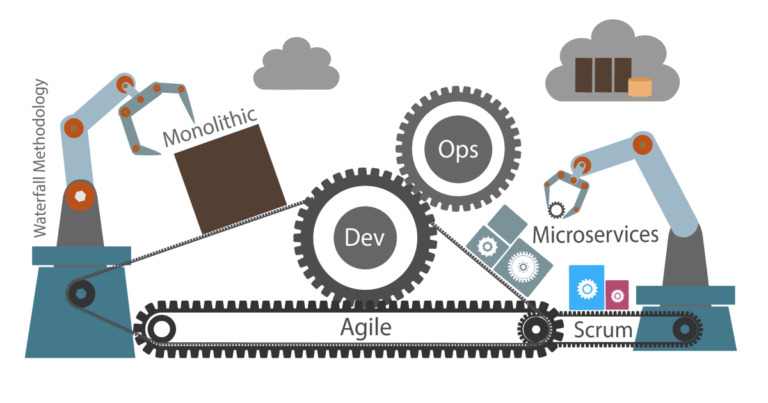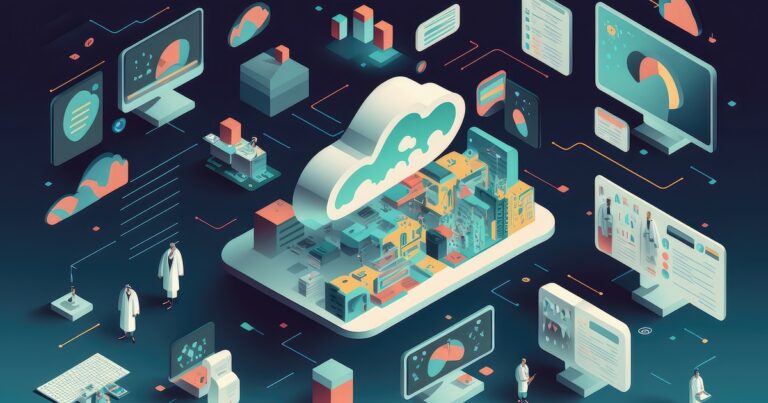DevOps and Microservices are the foundation of modern software development practices and cloud-native applications. Microservices, along with DevOps, lay the foundation for designing agile software applications for enterprises. DevOps and microservices architecture allows organizations to deploy cloud-based applications as independent services. As microservices and DevOps are complementing each other, enterprises achieve greater agility and operational efficiency with these modern application development and deployment methodologies.
Introduction of Microservices
Microservices or microservices architecture is an architectural style that allows you to develop an application as a compilation of multiple services instead of developing a single application. The architectural style offers several advantages over monolith, including:-
- Easy to test and maintain
- Loosely joined
- Separately deployable
- Planned around business effectiveness
- Managed by a small team
Microservices promote the operating model, like setting up small teams and making one functional change at a time. Also, these adjust the scaling since these are isolated from the remaining system. It is good to look at microservices as enablers for faster and more agile application delivery. But, microservice architectures lead to an outbreak in the number of processes your team has to manage. Microservices turn your single monolithic application into 10s, 100s, or even 1000s of independent services. Perhaps each service must be duplicated or deployed for resilience to different regions and created in development, test, and production environments. That’s where the real problem begins, such as:
- Microservices require a lot of infrastructure to develop and deploy. There are platforms to help, as Kubernetes and Swarm take away a lot of hassle from your way for development and deployment. But, you still need to unify your monitoring, debugging, continuous pipelines, and service discovery mechanisms.
- You require to set up reliable automation to support repeatability to eliminate potential errors and issues often common with human processes. Everything needs to be defined in code, testable, and repeatable, like your server setup, should be orchestrated with puppet, ansible, docker-machine, or other tools.
- While a monolith service is predictable, you know all its quirks and behaviors, this is not the same with microservices. Being distributed and independent, you need to develop or use centralized monitoring, logging, and alerting to manage them efficiently.
- Backward and forward compatibility needs to be maintained in service architecture design.
- Monitoring and managing a large micro-services deployment is similar to managing a network system. Hence, it needs to be designed and deployed as a network.
Introduction Of DevOps
DevOps combines a cultural shift that revolves around the importance of information exchange and the use of modern tools that support a collaborative environment. DevOps involves an all-inclusive team that uses sophisticated tools and contributes to each project uniquely. This shift develops a high-speed environment for deployments with the help of CI/CD pipelines. Understand DevOps as the successor of the waterfall model with which you hardly achieve any of the microservices benefits. Incorporating elements of what is coming out of the DevOps movements, such as automation as well as people and processes, provides faster development of applications and easier maintenance of existing deployments.
DevOps infrastructure automation approaches are about using modern application development practices such as autoscaling, golden images, automatic deployments, and dynamic service registration at runtime. It also allows you to take advantage of virtualization, containerization, and cloud to take huge advantage of Microservices architectures.
How Microservices and DevOps Complement Each Other
Using DevOps means automation of practices and optimization of processes with the help of technology. It refers to a company’s inside culture and the people who play their role in it. Integrating DevOps brings a great challenge, and thus cultivating the right culture is significant, which developed through deep changes in how people work and collaborate. But when enterprises commit to a DevOps culture, they build an environment for high-performing teams. Here, microservices teams can be considered high-performing since they focus on one aspect of the application while compiling continuous communication and collaboration for better team productivity, application performance, and faster deployment.
DevOps practices widely focus on breaking down monolith apps into small components and managing them as of choice as a team. Microservices support this application development & deployment model and scaling since these are isolated from the remaining system. This is why blending DevOps with microservices or vice-versa in the software development lifecycle is the fastest way to enhance the output of the distributed teams. Let’s check how microservices and DevOps compliment each other in day-to-day activities:
1. Continuous Integration And Continuous Delivery (CI/CD)
Teams following microservices architecture can build and deploy their code/services independently to dev/test/QA environments without affecting or disrupting other teams. Adopting DevOps means adopting CI/CD practices that help streamline software development and delivery lifecycles. CI/CD supports distributed teams to persistently build and validate their code and ship only a high-performing code to production.
2. Version Control
Version control is a fundamental DevOps practice that ensures proper versioning of microservices, such as keeping track of change over time, deployment access clusters, and how they impact the complete application. It helps maintain the required backward and forward compatibility of the application. Git is a widely used version control system tool with DevOps.
3. Agile Software Development
DevOps uses all the goods of agile software development practices and multiplies them using automation. Microservices that led to a small number of teams require strong project management. With automation and agile development, DevOps has become a core pillar of microservices by offering on-demand provisioning of resources, ensuring frequent and faster releases.
4. Infrastructure As Code
DevOps enables teams to shift to infrastructure as code principles and lets them deploy system resources in a reliable, repeatable, and controlled manner. IaC helps teams from the risk of human error, specifically in large complex environments, and enables them to automate deployment.
5. Configuration Management
DevOps promotes the use of configuration management tools to control the state of resources. Configuration management tools provide better insights into the resources such as servers, virtual machines, and databases. Moreover, the use of tools further helps teams roll out changes in a controlled, systematic way, reducing the risks of modifying system configuration.
6. Continuous Monitoring
One of the most significant advantages of DevOps is continuous monitoring. It helps get real-time visibility of the performance and health of the entire application stack. It enables teams to ensure they set actionable, meaningful alerts and collect rich telemetry, allowing them to draw insights from vast amounts of data.
Monolith systems that used to take longer processes, decisions, and delays in response times can easily be identified with DevOps best practices. Cloud, microservices and DevOps work best together in IT modernization projects.
Conclusion
The combination of DevOps and microservices enables organizations to develop quickly at an optimized cost. This increases agility and productivity. In a legacy application modernization, microservices increase DevOps productivity because you can work with the same toolset for development and operation. It enables you to mark similar terms and procedures for requirements, dependencies, and constraints. In this way, Dev and Ops can efficiently work together. If an organization does not complement DevOps with microservices, it can create competitive disadvantages and adversely affect it. Talk to an expert to learn more about how DevOps and microservices can improve your business processes and grow your business.




